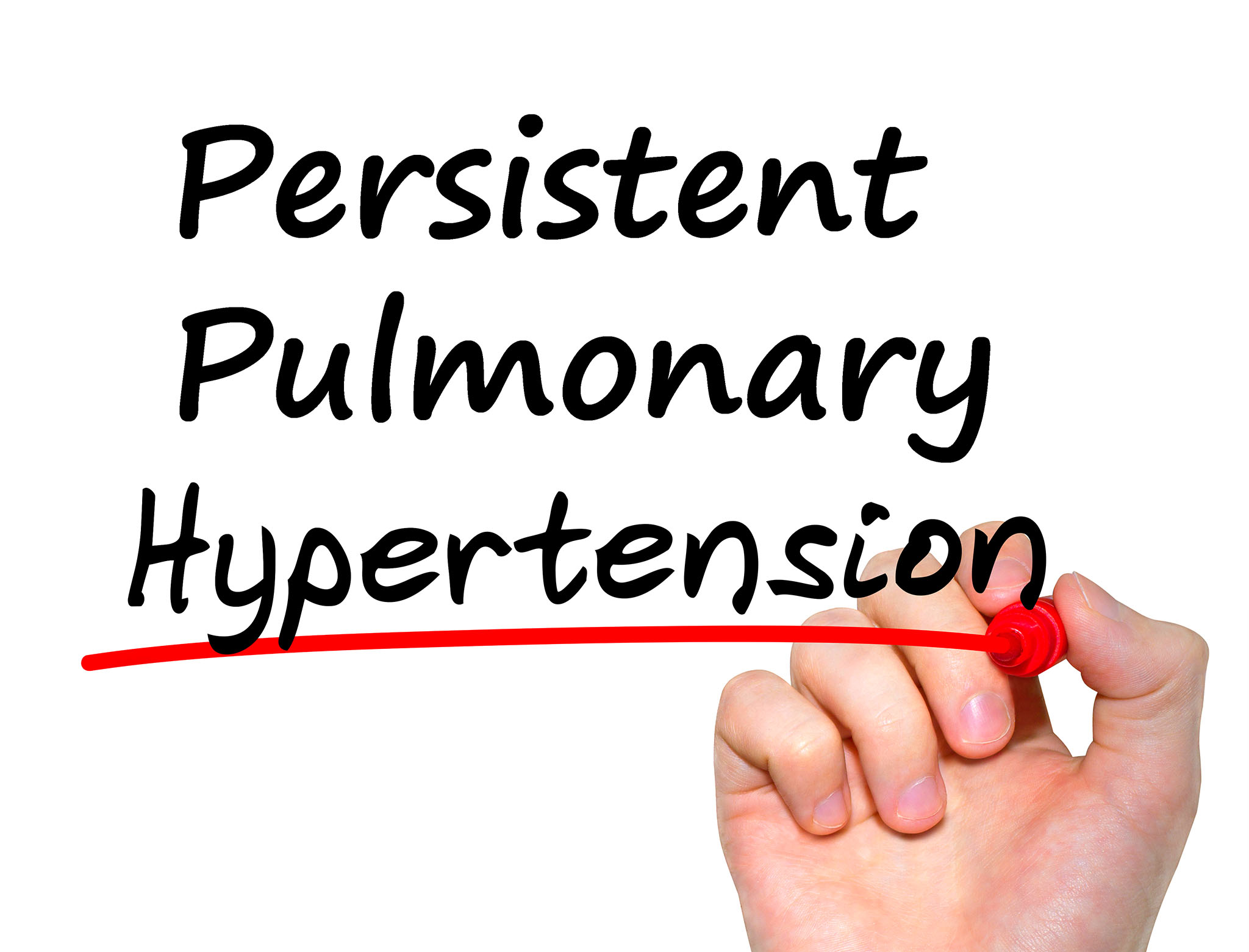What is persistent pulmonary hypertension (PPHN)?
Persistent pulmonary hypertension (PPHN) is also known as persistent fetal circulation. In this condition, a newborn baby's circulation changes back to the circulation of a fetus, where much of the blood flow bypasses the lungs.
Who is affected by persistent pulmonary hypertension?
About one in every 500 to 1,500 babies develops Persistent pulmonary hypertension (PPHN). It occurs most often in full-term or post-term babies after a difficult birth, or birth asphyxia (a condition that results from too little oxygen). PPHN is more likely in babies whose mothers took certain medications in late pregnancy, including nonsteroidal anti-inflammatory drugs and selective serotonin receptor inhibitors (SSRIs).
What causes persistent pulmonary hypertension (PPHN)?
During pregnancy, the fetal lungs are not used to exchange oxygen and carbon dioxide, so the lungs need less blood supply. The fetal circulation sends most of the blood supply away from the lungs through special connections in the heart and the large blood vessels. When a baby begins to breathe air at birth, this fetal circulation changes dramatically. The change in pressure in the lungs helps close the fetal connections and redirect the blood flow. Now blood is pumped to the lungs to help with the exchange of oxygen and carbon dioxide.
When a baby has lowered oxygen levels or difficulty breathing at birth, these changes may not occur and the baby's circulation returns back to the fetal system with blood directed away from the lungs. The lung pressure stays high. That is why this condition is called persistent pulmonary hypertension.
Why is persistent pulmonary hypertension a concern?
When blood is shunted away from the baby's lungs, it is difficult for the lungs to do the work of exchanging oxygen and carbon dioxide. Even breathing air with 100 percent oxygen, babies with PPHN have low blood oxygen levels. This can be serious, as all of the body's organs are dependent on oxygen-rich blood being pumped to them and may become damaged from lack of oxygen.
What are the symptoms of persistent pulmonary hypertension?
The following are the most common persistent pulmonary hypertension symptoms. However, each baby may experience symptoms differently. Symptoms may include:
-
Baby appears ill at delivery or in first hours after birth
-
Cyanosis (blue coloring)
-
Rapid breathing
-
Rapid heart rate
-
Low blood oxygen levels while receiving 100 percent oxygen
PPHN symptoms may resemble other conditions or medical problems. Always consult your baby's doctor for a diagnosis.
How is persistent pulmonary hypertension (PPHN) diagnosed?
In addition to a complete medical and delivery history and physical examination at birth, diagnostic procedures for PPHN may include:
-
X-ray: A diagnostic test which uses invisible electromagnetic energy beams to produce images of internal tissues, bones, and organs onto film.
-
Blood tests
-
Oxygen levels (when checked at different places on the baby's body, levels can be compared to see if the blood is being circulated to the lungs)
Treatment for persistent pulmonary hypertension
Specific treatment for persistent pulmonary hypertension (PPHN) will be determined by your baby's doctor based on:
-
Your baby's gestational age, overall health, and medical history
-
Extent of the condition
-
Your baby's tolerance for specific medications, procedures, or therapies
-
Expectations for the course of the condition
-
Your opinion or preference
Persistent Pulmonary Hypertension treatment may include:
-
Supplemental oxygen (giving 100 percent oxygen by a mask or plastic hood)
-
Placing an endotracheal tube into the baby's windpipe (ET tube)
-
Mechanical breathing machine (to do the work of breathing for the baby)
-
Medications (to completely relax the baby's muscles and reflexes so that he or she will better respond to the mechanical ventilator)
-
Inhalation of nitric oxide (to help dilate the blood vessels in the lungs)
-
Extracorporeal membrane oxygenation (ECMO)--a special technique that may be used when a baby does not respond to maximum medical care. With ECMO, blood from the baby's veins is pumped through an artificial lung where oxygen is added and carbon dioxide is removed. The blood is then returned back to the baby. ECMO is only used in specialized NICUs.
- PPHN is aimed at increasing the oxygen to the rest of the body systems. Long-term health problems may be related to damage from lowered oxygen in the body.


